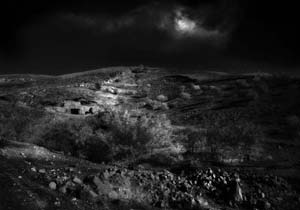
|
The Month of Iyar
 The formation of the Jewish People started on the eve of the Exodus in the first month, Nissan, and culminated with the giving of the Torah at Sinai in the third month of Sivan. This nation-building process is symbolized in the progression of the first three astrological symbols: Aries, the lamb, symbolizes the unity of the group. In a flock the lamb feels itself identical to its neighbor; just as sheep follow a shepherd, the Jewish People accepted the leadership of Moses.
The formation of the Jewish People started on the eve of the Exodus in the first month, Nissan, and culminated with the giving of the Torah at Sinai in the third month of Sivan. This nation-building process is symbolized in the progression of the first three astrological symbols: Aries, the lamb, symbolizes the unity of the group. In a flock the lamb feels itself identical to its neighbor; just as sheep follow a shepherd, the Jewish People accepted the leadership of Moses.
The Shor, the bull, which desires to dwell in isolation, the month of Iyar, symbolizes our month. Iyar is therefore a time of introspection and self-development, a time of preparation for receiving the Torah in Sivan. However, there were times when the Jewish People also exhibited the rebellious qualities of the bull and 'bucked' the leadership of Moses of Aaron when they rebelled in the desert during this month. This process of individual growth is connected to the counting of the Omer. Throughout history, the period of the Omer has been fraught with tragedy for the Jewish People: Some 1,900 years ago, all 24,000 students of Rabbi Akiva died during the Omer because they failed to give each other enough respect. Exactly 900 years ago, whole Jewish communities were obliterated in Germany during the First Crusade. Men, women and children were slaughtered, and Torah scholars burned alive. 250 years ago, Ukrainian peasants under the leadership of a petty aristocrat called Bogdan Chmielnicki aided by Dneiper Cossacks and Tartars from the Crimea unleashed a terrible massacre: In the synagogue in Nemirov, the Cossacks used ritual knives to slaughter the inhabitants. In this town alone, 6,000 men, women and children were butchered. In remembrance of Rabbi Akiva's students and the other tragedies, it is the custom during the period of the counting of the Omer to abstain from things that bring joy to the heart: Weddings are not held; We don't listen to music and we refrain from cutting our hair as is the custom of a mourner. If you're flying over Israel on the night of the 33rd day of the counting of the Omer, however and you look down out of your plane, you will see thousands of bonfires dotting the landscape as far as the eye can see. What do these bonfires symbolize? When all 24,000 of Rabbi Akiva's students had died, the world was desolate. The Torah had been forgotten - there were no pupils to go out and teach and disseminate the light of Torah. Rabbi Akiva traveled to the rabbis of the South and taught them. On Lag B'Omer, he laid his hands of the heads of these, his last five disciples, giving them s'micha (rabbinical ordination). And from that day, the world began to brighten from these five points of light. As the day of their ordination was the 33rd day of the Omer, we light bonfires in Israel to symbolize the great light that the Torah represents. One of those last five disciples of Rabbi Akiva was the great Talmudic sage Rabbi Shimon Bar Yochai. His departure from this world also occurred on Lag B'Omer. On the day of Rabbi Shimon's passing, a great light was revealed to his students when he uncovered many of the hidden secrets of the Torah. This was written down in the Zohar (lit. 'shining'). The bonfires symbolize the light of the hidden wisdom that Rabbi Shimon bar Yochai revealed on Lag B'Omer. More articles available at Ohr Somayach's website. |